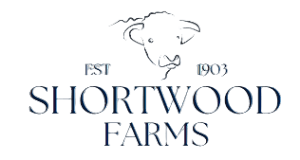Why we chose native breeds for our farm?
Since coming out of dairy farming last year, we are looking towards the future and for us that is native breed British beef. Currently, our shed spans Great Britian’s breeding with Herefords, Welsh Blacks, Angus and a lone Jersey all living side by side (Green, 2018). But why have we chosen to farm native over the high producing continental breeds that are popular for beef systems all over the UK?
Firstly, native breeds are more suited to being farmed in low input systems. Native breeds have adapted to thrive on grass and retain higher levels of fatty acids and aminos without the need for concentrates or grains. Grass contains 45-50% omega 3 fatty acids and a scientific study showed that pasture raised cattle contain reduced levels of saturated fats, which in turn is better for your health as a consumer (Kaufhold, 2006). Moreover, cattle who are fed on a solely grass/forage diet have higher rumen capacity than those fed and finished on grains and concentrates, and naturally these native breeds are favoured for this system over the more intensive continental breeds.
Furthermore, with all of this wet weather we have been experiencing over the past few months, we must consider the implications of this on our pastures. Native breeds naturally have a smaller stature and smaller feet which reduces the pressure put onto the ground (Martin, 2022). If conditions are wet, this reduces the damage to the field and in turn reduces ground compaction, which could stunt future grass growth. So, fields will recover more effectively after being grazed by native cattle.
With their smaller stature also, native breeds such as Herefords, calve easier than continentals due to smaller calf sizes. Calf sizes in native breeds are smaller than continental breeds for two reasons: native breeds are slower growing especially when fed on forage and, continental breeds have been bred to have large amounts of muscle, for example Belgian Blues, which increase the possibility of caesarean sections and need for human intervention (Aerts, et al., 2010). This lack of need for intervention in the calving process is why you will often find dairy herds who breed their milkers with native breed bulls, as shown by Stackpole Home Farm and Stackpole Quay (Hereford Cattle Society).
Finally, on a more sentimental note, the Hereford Cattle Society was founded less than 5 miles down the road from our farm in 1878 and with the farm being in the beautiful Herefordshire countryside, it only feels natural for us to farm Herefords and other native cattle during the next step of our farm.
Works CitedAerts, S., Opsomer, G., Hoflack, G., Kolkman, I., Laevens, H., & Lips, D. (2010). Analysis of body measurements of newborn purebred Belgian Blue calves. Animal, 4(5), 661-671.Green, K. (2018, April 14). A guide to the native cattle breeds of Britain, from Aberdeen Angus to Jerseys. Country Life.Hereford Cattle Society. (n.d.). Hereford genetics add value to NZ-style dairy. Retrieved from Hereford Cattle Society: https://www.herefordcattle.org/593-2/Kaufhold, U. (2006). Belties and Omega 3. Retrieved from The Belted Galloway Cattle Society: https://www.beltedgalloways.co.uk/belties-and-omega-3/Martin, L. (2022, February 10). Championing Native Breeds. Retrieved from Carbeth Home Farm : https://www.carbethhomefarm.co.uk/championing-native-breeds/